Interior Design for Life Sciences Environments
Published 06-01-23
Submitted by CRB
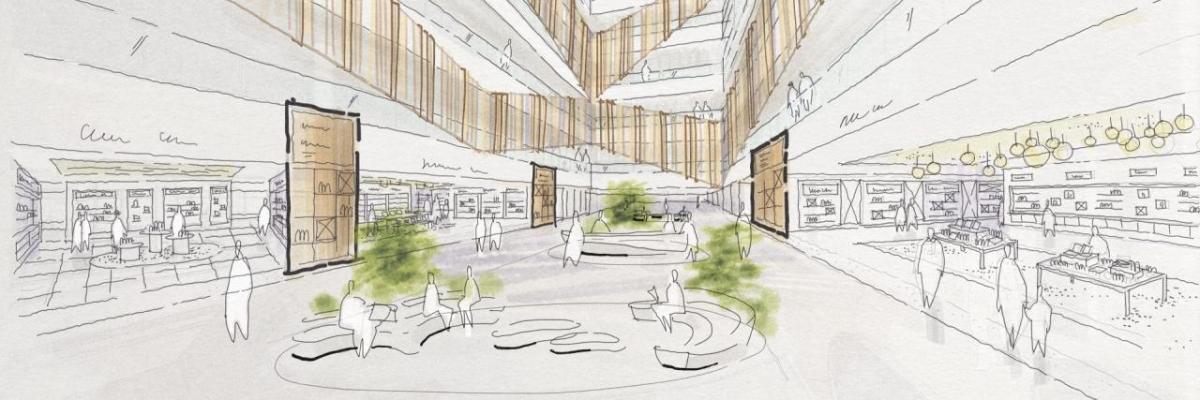
By Lauren Humphreys, NCIDQ Senior Interior Designer, Valerie Boshoer, LEED GA Senior Interior Designer, and Viktoriya Lupareva, NCIDQ, WELL AP, LEED GA Interior Design Lead
Where science, creativity, and business are seamless.
We’re at a fascinating point in history where the work environment is being completely re-defined, and today’s workforce has higher expectations—and a greater influence—on the workspace than ever before. Where there was once a relatively standard approach, we’re now developing innovative solutions to manage hybrid and flexible work philosophies, incorporate digital and real-life experiences, manage employees’ concerns around health, and attract top talent, all while ensuring that a company’s brand is reflected throughout a space.
Beyond aesthetics, good design improves productivity, job satisfaction, collaboration, and creativity. It attracts new talent and entices workers to commute to their workplace. And it keeps people safe and healthy. What’s more, in a world where C-level compensation is increasingly tied to environmental, social and governance (ESG) objectives that include employee well-being and a reduced carbon footprint, there is increased focus on these qualities in interior design.
Nowhere is this more true than in the life sciences industry, where highly specialized technical areas and administrative environments must function seamlessly, opportunities for effective collaboration and ideation are essential, and the competition for talent and investment is high.
Interior design for the life sciences industry requires a unique skill set. It’s a mix of creative and strategic thinking, a finger on the pulse of design innovation and end-user expectations, and a keen knowledge of the needs of scientists and the regulations that affect the buildings they work in.
In short, designers provide the thread that brings all the disparate parts of a space together to build a cohesive experience. This piece is an introduction to the key areas of CRB’s interior design approach that enhances life sciences facilities:
- Workplace Strategy
- Design Process for Life Sciences
- Sustainability and Wellness
From start to finish, our creative designers collaborate with architects and engineers. The complementary skills intertwine throughout a project to achieve a quality end result for our clients.
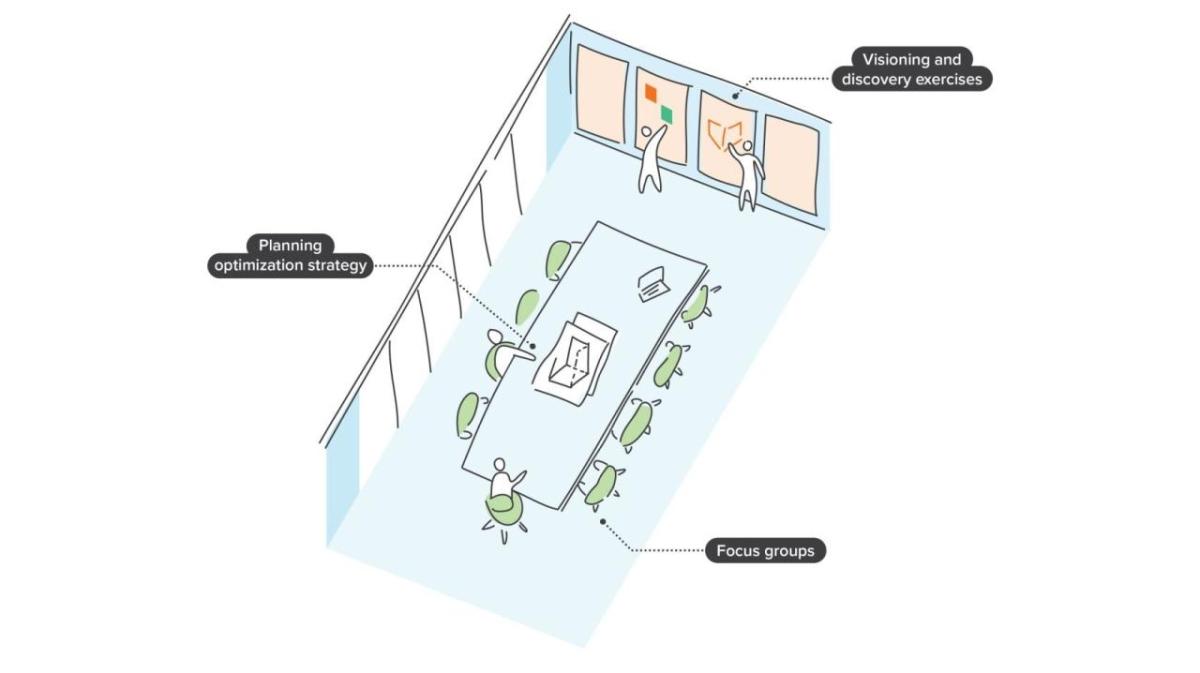
Starting with workplace strategy
Meeting the needs of a life sciences company in today’s work environment is part investigative, part innovative, and part communication skills. There are many layers of work that take place before anyone opens up a design file.
Interestingly, scientists are the original hybrid workers. While the technical aspects of their job take place in a highly regulated lab space, a large portion of their work requires writing reports, summarizing findings, and communicating with team members. They’ve moved smoothly between the lab, work desk, boardroom, and home office for years. Now, the rest of the life sciences team has joined the hybrid workforce, making interior designers’ role more complex, and even more essential. How we allocate the space is no longer a simple mathematical model of employees and growth projects, but of what percentage of people will be on-site on any given day, and how they would like to work while they are present.
What kind of space is required for people to feel comfortable and productive? How do we build in both flexibility and privacy? What level of collaboration must happen between the scientists and the business team, and how much of the science do we want ‘on display’? How do we ensure that meetings involving remote and on-site team members are productive for everyone?
This is just a taste of the complexities and issues we need to explore with clients at the outset of a project.
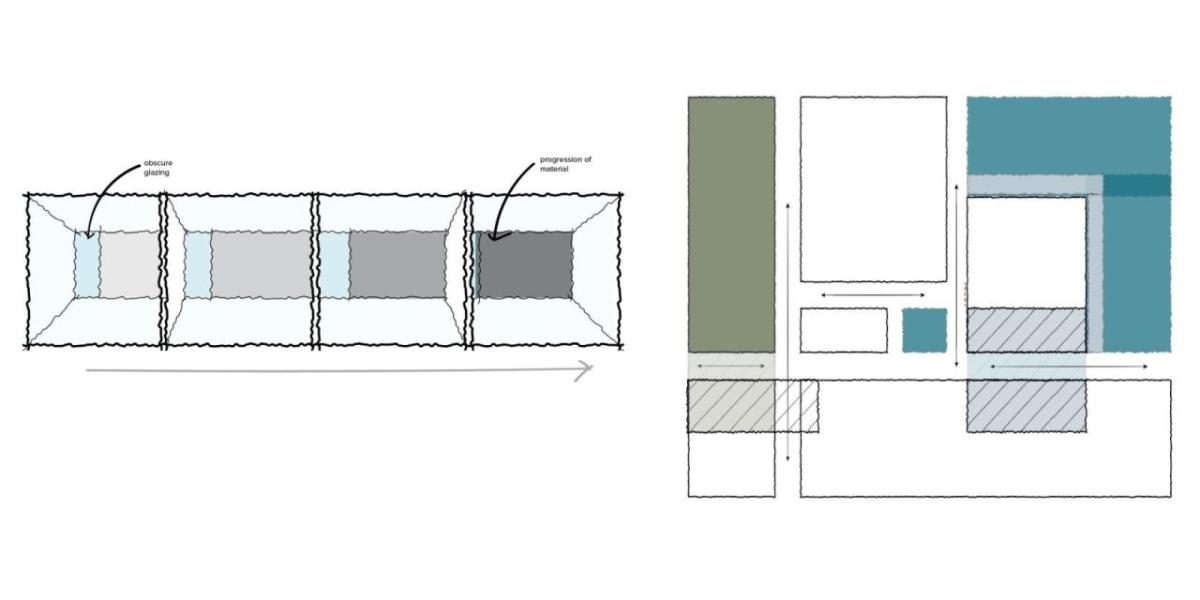
Our planning and programming begin with a visioning and discovery exercise. This is a series of utilization studies to evaluate the current workplace environment and needs for a new one. We conduct interviews, focus groups, online surveys, and workshops to gather input from employees, leaders, and HR to understand how people use the current space, where it’s lacking, and what they view as essential for an upgrade. Our designers also connect with business operations. Success in today’s marketplace requires agility, making an adaptable space essential to accommodate planned—and potential—growth and change.
With a clear picture of how a space is currently being utilized and where the opportunities lie for improvement, we create a planning optimization strategy. This leverages all the information we’ve gathered and our knowledge of current design approaches and trends, and incorporates adaptive reuse strategies to reduce environmental impact.
Programming concepts and test-fitting the space is the first step to verifying our strategic concepts and ideas and to understanding their impact on the practical layout. It’s also an opportunity for our clients to understand how the space will flow and function.
By conducting a thorough utilization analysis before implementing any changes, we can gain valuable insights and make adjustments to optimize the design. This allows us to evaluate the effectiveness of our plans, identify areas for improvement and eliminate any unnecessary components. Occasionally, we establish a designated beta testing area for certain user groups to evaluate our ideas and predictions about the workplace and its employees.
Workplace strategy is crucial to uncovering the best design approach for everyone involved—from company executives to the firm’s first point of contact at the reception desk. It allows us to gain alignment and create a plan that will help the company succeed as it grows or transforms over time.
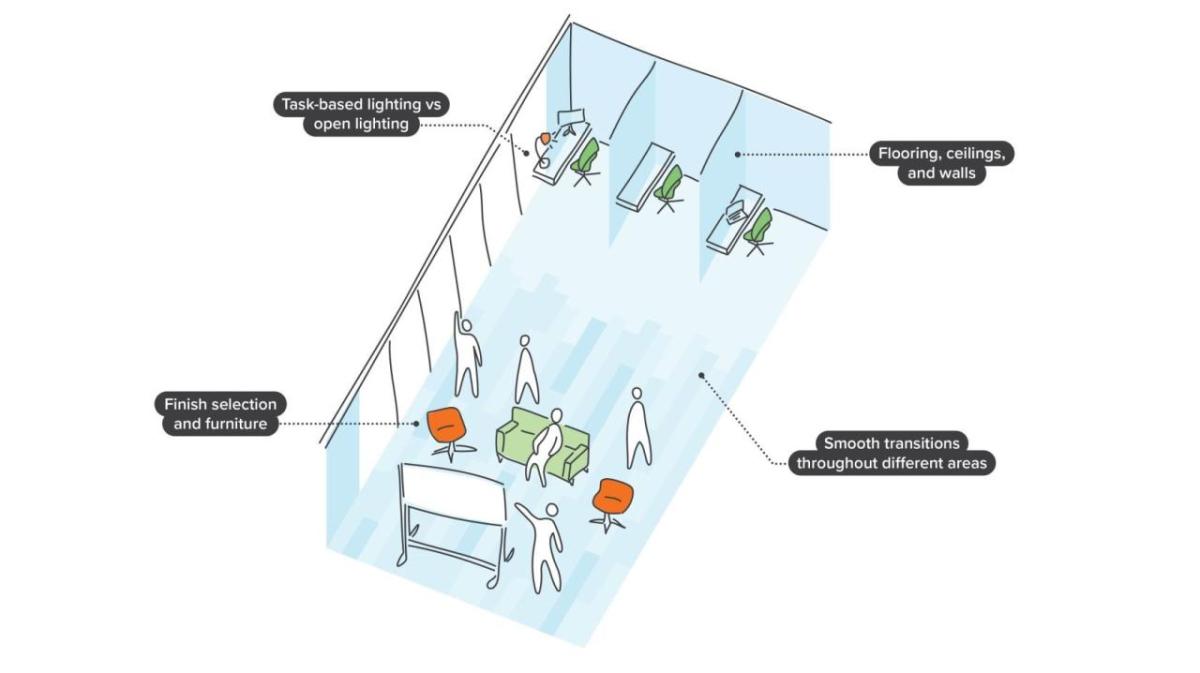
A peek inside the interior design process
Our goal in the design process is to create a space that truly defines the experience and people’s interaction with the built environment. This is where vision meets function, aesthetics meets technical needs, and efficiency meets flexibility.
For our life sciences clients, the workflow between the technical and administrative spaces is key. Gone are the days of hiding the lab away in a windowless interior room. People are proud to be part of teams that are in some cases literally saving lives, and investors, partners, and clients enjoy a sneak peek at the process. With this in mind, security and privacy are important factors to consider. Protecting intellectual property and the privacy of your science team while at the same time boasting about their work is all part of our challenge.
Teams continue to look for collaborative spaces that stimulate creativity but are also now conscious of health concerns and airflow quality. It can be a puzzle—the process of moving people and materials safely into, out of, and through the lab space is complex. Safety is obviously paramount, as is the protection of the work—small changes to the environment can have large effects, particularly creating the potential for contamination, and not all interior designers possess knowledge of these obstacles and issues.
With a workplace strategy in place and all these considerations in mind, we create the overall design concept for the space. What will it feel like when you enter? Will it communicate a clinical environment, be modern or corporate, or perhaps offer a more natural, earthy vibe?
The design concept we create must align with the company’s corporate culture and brand identity. The physical structure of the building and its location also play a crucial role in the design concept and principles. For example, a building in an urban setting will require a different design approach than a greenfield project in a tech park. The regional location also impacts the design concept; a building in a warm climate will have different design needs than one in a colder climate. We must also account for environmental factors and regional influences to ensure that it is functional and practical for the specific location. Elements like the use of natural light and ventilation will be different for a building in a tropical region than one in a desert region.
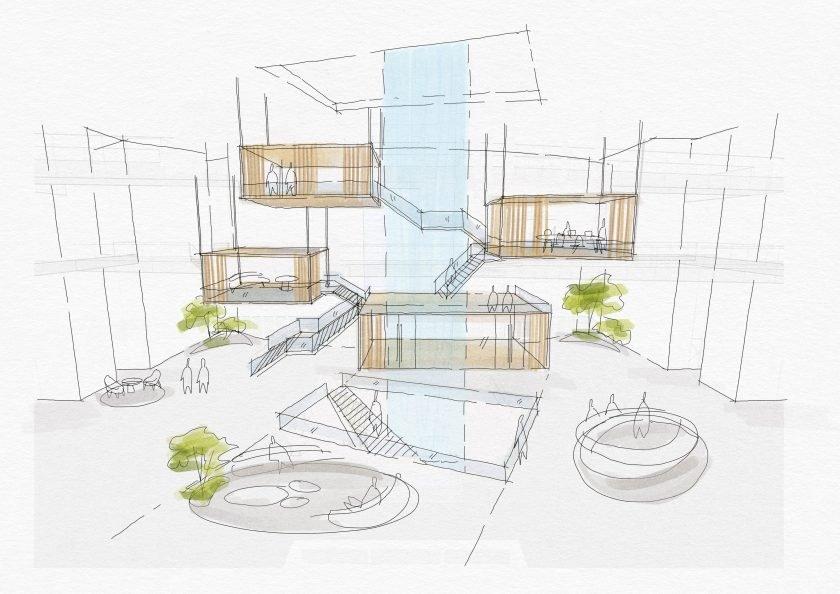
As the team has gathered the insights and data points during the workplace planning stage, we have our working parameters: the number of people we need to accommodate, how they work, and what kind of functional spaces are required.
We look at workspaces, but also areas that encourage connection as people move throughout the building, places that will foster collaboration, meeting rooms, and quiet areas designed for maximum focus. In some cases, a company will require an impactful entranceway or large space for all-hands meetings.
These inputs form the basis of our schematic design. We determine what spaces need to be next to each other and why and bring that thinking to life through floor plans. Here’s where working with the other disciplines—architects; mechanical, electrical, and plumbing (MEP) and HVAC engineers; and lab planners—is key. We collaborate to ensure we are meeting the technical requirements for the space and work through any challenges as we progress. It’s an iterative process that often takes several drafts to get right.
Lab spaces warrant a special mention. These highly technical, process-oriented spaces are a project within a project. They need to be designed by specialists who understand the science that’s going to take place within them, and what that work means for utilities, hazardous waste storage and movement, specialist equipment, and bench orientation. And it’s not just the space itself that they consider, but how materials, people, and waste enter and exit the lab. Our role is to dialogue with the lab design team to ensure there is consistency across all of the spaces. There needs to be an easy connection between regulated, technical lab space, and what sits just outside of it. This is important not just for aesthetics, but to ensure the safety of employees and the work that takes place in the lab.
The schematic work is very practical, but, as we have already mapped out the design concept for the space and its look and feel, the placement and logistics of workspaces reflect aspects of the design concept. As we move into design development, we flesh out the design concept as it applies to the floorplan.
At this stage, we can begin to create photorealistic renderings to accurately depict what the space will look like. This is an important step as it sets expectations and allows for alignment before construction starts.
We create 3D renderings of the spaces for clients to fully comprehend the design, and we also provide fly-through videos for an even more realistic experience. This allows the client to experience the design before construction begins.
Many clients use these renderings and videos to aid with investment, recruitment, and local government meetings in the time between design approval and construction completion.
Lighting a space is not just a case of flipping a switch. It’s a highly technical part of the interior design process and has wide-ranging effects on productivity, energy efficiency, and well-being.
Light is tightly linked to the function of a space and how we move within it. Workstations, for example, are lit with task-based lighting of a cool temperature (more on this in a moment), whereas a meeting room will require lighting that allows a large group of people to work together, to see a screen on a wall, or to focus on a speaker.
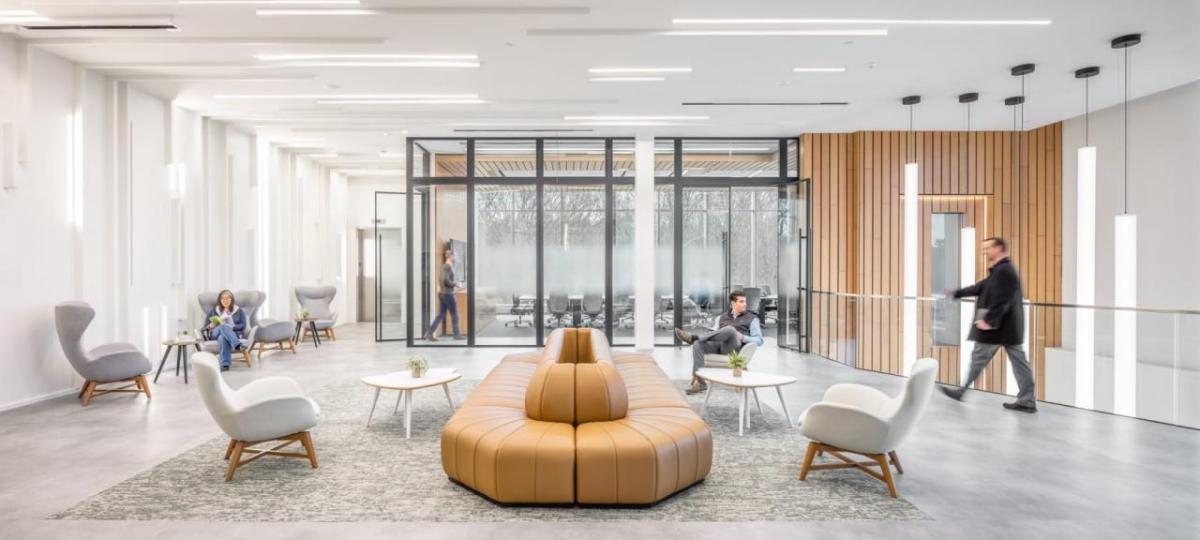
Together with engineers, interior designers consider a vast range of variables when planning lighting:
- Visual performance – what do we need to do in the space?
- Visual comfort – what is the right level of light for users?
- Daylighting – how can we maximize the use of natural light?
- Color appearance – how can we enhance focus and relaxation?
- Lighting controls – what will achieve efficiency and user comfort?
- Energy efficiency – are we minimizing energy use?
- Maintenance – how easy (or not) are maintenance and repair?
- Sustainability – are we doing the best for the environment?
- Mood – are we optimizing for psychological & biological considerations?
- Architectural integration – what is the most intuitive placement of lighting and controls?
Finish selection and furniture is the point in our process where things start to feel “real.” Fixtures, fittings, and furnishings are an important part of how people experience a space, and not just because they look good. Aesthetics are important, of course; this work reflects the approved design concept. But our team must also consider functionality, durability, accessibility, safety, acoustics, and flow. And, as always, managing a budget is a priority.
Different areas have different purposes, so, as with lighting, we consider these in our plans. High-traffic areas such as reception, hallways, and elevator lobbies take the most wear and tear and also include code considerations for safety reasons. Assembly spaces get a lot of attention from our clients. These areas, where people congregate for all-hands meetings, for example, tend to offer a “wow” factor for visitors and are often captured in video and photographs.
Furthermore, any time there is a potential for a large number to gather, crowd safety comes into play.
In selecting soft furnishings, we look to match function, ergonomics, frequency of use, and duration of use with each piece. Does the furniture need to be moved with ease? Can it be adjustable to suit diverse bodies? We perform sit tests and set up workstation mockups so clients can experience how the seating, desk space, and storage will work together.
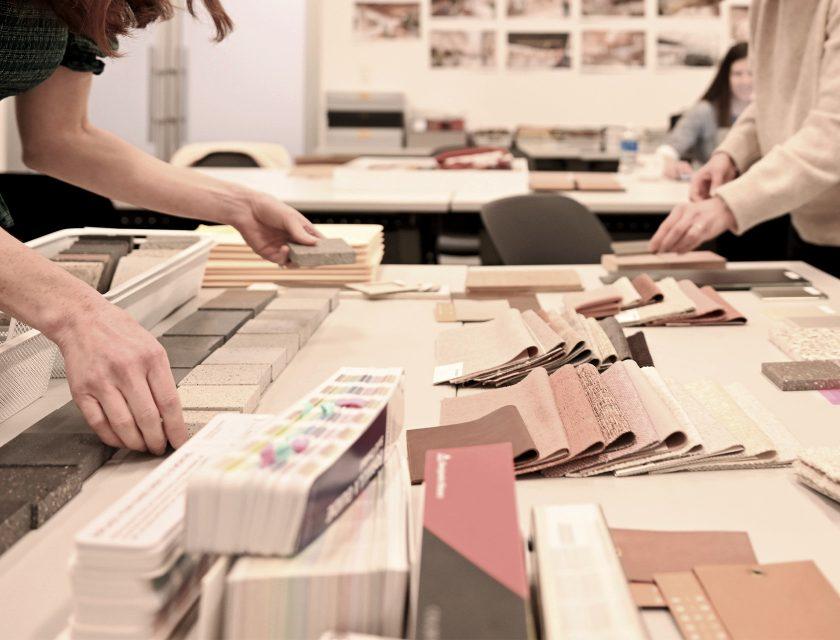
Specialty wall design and window coverings are also part of the selection process. Again, form and function go hand in hand. A wall installation that offers a branding opportunity may double as a sound barrier. Window coverings add visual interest but also help control room temperature and light.
Flooring, ceilings, and walls play a crucial role in customizing the experience of a space while meeting the needs of its users. These elements have fire ratings and specialized flooring is required in clean rooms and labs. Accessibility is also important, and we work to ensure smooth transitions throughout different areas in compliance with the American Disabilities Act (ADA) Standards for Accessible Design.
The design of indoor and outdoor spaces is becoming increasingly interconnected, and this requires extra care from our team as different materials are used for weather resistance and durability. Climate and location also play a role, such as considering flood zones and seismic conditions.
Sampling is a critical step in the process, as touch and feel make a real difference to the experience, and accurate color representation is crucial when selecting furniture, wall coverings, flooring, and paint. For highly custom pieces, our team visits showrooms and manufacturers’ headquarters to ensure everything meets specifications.
Once each piece is selected and approved by our clients, our design team adds all the information into the drawings, creating a technical specification document that includes materials, installation instructions, codes, regulations, and a finish schedule.
Promoting sustainability and wellness
Our clients are increasingly aware of the importance of a healthy work environment and the well-being of their employees.
While the health of the built environment includes strategies for airflow, water quality, and, in our case, the safe movement and storage of hazardous materials, a people-first space goes beyond this to include considerations such as chemical use in materials, allergens, acoustics, light/natural light, thermal conditions, and movement throughout the environment.
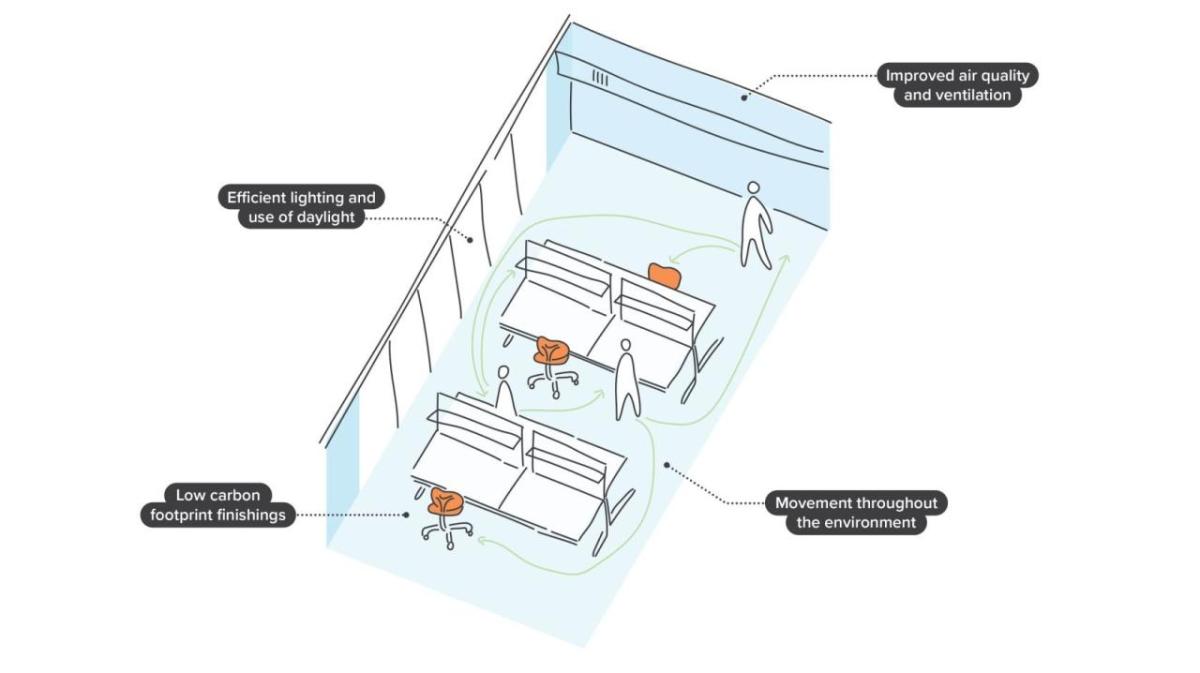
WELL Certification
The International Well Building Institute (IWBI) is an organization that promotes the creation of healthy buildings—those that foster physical and mental health. The IWBI offers WELL Certification to workspaces. Based on 10 core concepts, it’s a point-based system that’s applied for and renewed every three years.
Interior design impacts many WELL initiatives, ranging from selecting ergonomically sound furnishings, reviewing chemical content in finishes (fire retardants are essential for safety, but can also be hazardous to health, so striking a balance is key), and ensuring all spaces in the building are accessible. Our goal is to meet the needs of the diverse group of people that walk through the doors on a daily basis.
At CRB, we are as invested as our clients in building spaces that minimize carbon use and maximize sustainability. Sustainability initiatives are now a requirement of a company’s customers and investors, and business leaders look to design to help them meet or exceed industry standards.
LEED certification
In the life sciences industry, it is crucial to maintain a high level of cleanliness, safety, and sustainability to ensure the well-being of building occupants and the environment. This is why many life sciences companies choose to certify their buildings under the LEED rating system.
LEED certification provides a comprehensive approach to design, construction, and operation that takes into account the specific needs and concerns of the life sciences industry. These buildings are designed with features such as improved air quality and ventilation, low-emitting materials, and water-saving fixtures. By certifying under LEED, life sciences companies can demonstrate their commitment to sustainability and environmental responsibility, as well as to the health and safety of building occupants.
Additionally, LEED certification can provide a competitive advantage and enhance the reputation of the company. With its focus on sustainability, energy efficiency, and environmental responsibility, LEED certification is a valuable choice.
From a LEED perspective, interior design can encompass energy-efficient lighting and controls, maximizing the use of daylight, selecting finishings that have a lower carbon footprint, and partnering with like-minded, green-focused partners.
Our team of designers continues to work closely with engineers, architects, and clients to meet these standards and facilitate all the required documentation to obtain certification.
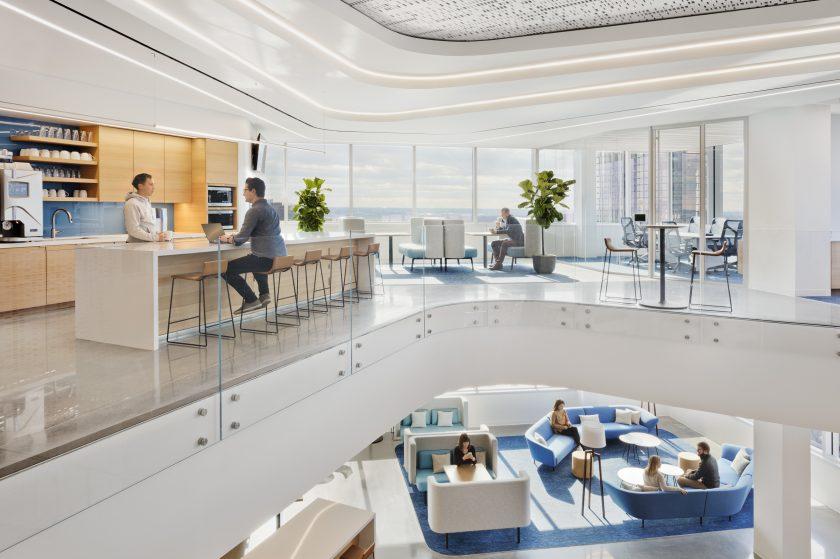
Transforming life sciences through interior design
If we’ve learned anything over the past several years, it’s that life and work are unpredictable. Flexibility and future-proofing are essential to any great design—particularly in highly regulated industries.
At CRB, we embrace the spirit of innovation and creativity in all our interior design solutions for the life sciences industry. Our designs are both trend-forward and functional, reflecting the cutting-edge nature of the work taking place within these spaces.
We understand that life sciences companies are at the forefront of discovery and progress, and we strive to create environments that foster collaboration, inspiration, and visionary thinking. Our spaces are thoughtfully crafted to promote seamless flow, encourage intuitive connections, and cultivate an atmosphere of boundless possibility.
We believe that interior design has the power to ignite imaginations, spark new ideas, and drive breakthroughs in science and medicine. Our team of designers is dedicated to bringing your vision to life, creating spaces that are not only beautiful and functional but also truly transformative.
Interested in learning more about our interior design capabilities? Let’s talk.
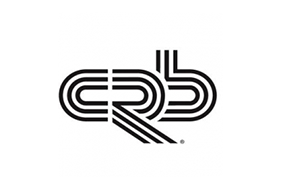
CRB
CRB
CRB is a leading global provider of sustainable engineering, architecture, construction, and consulting solutions to the life sciences and food and beverage industries. Our innovative ONEsolution™ service provides successful integrated project delivery for clients demanding high-quality solutions -- on time and on budget. Across 21 offices in North America and Europe, the company's nearly 1,800 employees provide world-class, technically preeminent solutions that drive success and positive change for clients and communities. See our work at crbgroup.com, and connect with us on social media here.
More from CRB

